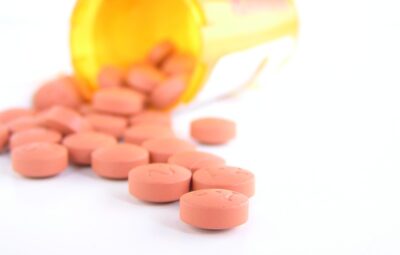DHEAS is a significant indicator that has a great impact on female health and physique. As women get older, the amount of DHEAS, a molecule found in plentiful amounts within the body, decreases. Having knowledge of your DHEAS levels may not be talked about much in health-orientated programs. Yet, it can aid in bettering your muscle and bone health, sexual performance, physical exertion capabilities, and lifespan.
What is DHEAS?
DHEAS is an alteration of the regular DHEA molecule, enabling it to remain in circulation in the bloodstream. DHEA is formed out of cholesterol and saved as DHEAS until it is needed to produce different types of steroid hormones, such as estradiol and testosterone, and other sex steroid precursor molecules. The hormones produced by the body play a significant role in supporting energy levels, promoting muscle and bone metabolism, and providing the basis for sexual activities in men and women.
The gonads—the testes in males and the ovaries in females—are what produces estrogen, testosterone, and other fundamental sexual hormones. In males, the male gonads continually secrete testosterone and other sex hormones; however with each advancing year, the amount released diminishes progressively. When women come to the end of their reproductive years (menopause), their ovaries stop producing hormones like estrogen entirely. Menopause sparks a slew of physiological alterations due to hormonal fluctuations, and when it occurs, the only way for women to get the critical sex hormones is through DHEAS.
Why is DHEAS Important?
The adrenal cortex of the kidney is responsible for making DHEAS, which is part of a group of hormones known as corticosteroids. Examples of corticosteroids which have other roles include cortisol, which enables the body to fight infection and handle stress, and the mineralocorticoids, which are responsible for keeping blood pressure under control. The quantity of DHEAS that can be detected in the blood serum is greater than any other substance released by the adrenal cortex. Although scientists do not have full knowledge of it, they suspect that the precursor for the sex steroids may have other purposes besides what is already known.
It is known by scientists that regardless of gender, the amount of DHEAS produced in the body increases from a young age until around the age of 20-30, when it peaks. After this, DHEAS levels steadily decline with age.
DHEAS concentrations that are on the lower end have been connected to greater odds of developing issues such as a weakened immune system, a heightened susceptibility to heart illness and stroke, and unsteady glucose levels. Measuring the quantity of DHEAS is a clinical way of identifying a variety of issues connected to the pituitary gland and the adrenal glands. Blood that has a low amount of DHEAS can be associated with a decrease in pituitary and adrenal performance, resulting in a wide range of health issues for females, such as tiredness and listlessness, an inability to effectively manage their weight, unbalanced menstruation, and sterility. The adrenal glands being excessively active is linked to higher DHEAS rates, in addition to polycystic ovary syndrome and early onset puberty. These issues can also result in challenges with maintaining a healthy weight, menstrual cycles that are not normal, and an inability to conceive. Women who have overstimulated pituitary and adrenal glands could experience extra indications such as pimples and too much or unusual body hair (hirsutism).
Tracking your DHEAS levels is beneficial in managing your health in accordance with your age since they can be altered with age-related conditions and health issues which are more relevant to women.
What Are the Symptoms of Low DHEA Levels?
It is important for both men and women to maintain proper DHEA levels. This hormone resembles testosterone and is of great significance in multiple tissues. As a result, signs of a low DHEA level in the body may involve multiple organs.
For instance:
Weight gain
Low DHEA levels cause hormonal imbalance. This issue is connected to sex hormones that have an effect on energy breakdown and fluid storage. Altogether, this leads to weight gain.
Adding DHEA to one’s diet may be the answer to the issue, and it has been observed to be effective at decreasing body fat in seniors. It alters the functioning of liver cells and adjusts fat metabolism.
If your DHEA levels are in the average range, you are more likely to avoid being impacted by obesity, that can be caused by genetics or diet.
Depression
This is an issue that is widespread in our culture, and is particularly frequent amongst older people. As it was previously mentioned, neurons generate some DHEA, and this hormone balances out energy levels plus much more.
Mental health disorder depression is quite intricate, and on occasion, DHEA may be involved.
A few pieces of research indicate that there is a link between bad life contentment and reduced amounts of DHEA. These patients experience poor psychosocial stress and behavioral changes. Having excessively high amounts of DHEA can result in reckless behavior and disregard for consequences.
Lower sex drive
Signs of low levels of DHEA, a sex hormone, could include issues with sexual activity.
Research indicates that individuals who suffer from erectile dysfunction tend to possess reduced amounts of DHEA. DHEA is essential for maintaining hormone levels in women after menopause. The reason why someone might experience a decreased libido following this time period could be due to their lower levels of DHEA.
Psoriasis and inflammation
DHEA is often referred to as the “hormone of youth” due to its ability to promote skin health. Individuals who suffer from swelling, hypersensitivity reactions, and psoriasis may gain advantage through controlling their cytokines with DHEA. This hormone influences the manner in which your immune cells manufacture inflammatory mediators.
DHEA is a steroid hormone. This steroid reduces the emission of inflammatory compounds, like most other steroids do.
In sepsis, reducing the amount of DHEA could lessen the seriousness of the affliction. In lupus erythematosus, DHEA supplementation may reduce disease activity.
Fractures and brittle bones
Bone health is affected to a certain degree by DHEA, much in the same way estrogen and testosterone do. Having a normal level of DHEA lessens the chance of developing osteoporosis and osteopenia.
In older age, issues concerning the bones may be intensified if DHEA and other sex hormones are not at their appropriate levels.
Research has indicated that individuals with small amounts of dehydroepiandrosterone sulfate in their systems tend to possess lower bone density. Studies conducted in male and female patients that utilized DHEA treatment displayed a heightened bone mass density in the vicinity of the femoral neck.
Memory problems
Having a low concentration of DHEA and DHEA sulfate could result in an immature brain. This hormone plays an essential role in brain function.
It works on a brain region called the hippocampus. This region is used during cognition and memory recollection. It is for that reason why occasionally issues with memory can be attributed to inadequate DHEA amounts.
Some research has indicated that taking DHEA may be advantageous in preventing or managing Alzheimer’s disease. Nevertheless, there is still a lot that needs to be done before this could be utilized as a type of treatment.
Why Measure DHEAS Instead of DHEA?
The letter “S” in DHEAS represents the sulfate combination, which is made up of one Sulphur and four Oxygen atoms, that is attached to DHEA. The sulfate group is essential for DHEA because it is a lipid which makes it not very soluble in blood; just like oil and water do not mix with each other. The sulfate group helps keep and send DHEAS around in the bloodstream. This is why DHEAS levels are much easier to measure than DHEA levels, since there is roughly 1000 times more DHEAS in the blood than there is DHEA. Nonetheless, DHEA is the particular compound which is turned into testosterone, estradiol, as well as other significant substances. When required, certain enzymes can take the sulfate off DHEAS, transforming it into its functioning form. The amount of active DHEA present in the body – which can be used to produce other hormones – can be accurately estimated through testing of DHEAS levels since these two substances can be interchangeably converted. Studies have also indicated that the concentration of DHEAS in the bloodstream is more reliable throughout the day than the amount of DHEAS in the body. This produces congruent measurements for someone over a long period, so a shift in DHEAS amounts symbolizes an alteration in wellbeing instead of standard everyday fluctuations.
What Happens If Your DHEA Levels Are Too Low?
As previously stated, DHEA is a derivative of the steroid family and should be considered as a sort of sexual hormone. It is similar to a male hormone and is capable of becoming testosterone. However, DHEA also serves a purpose on its own in cells throughout the body.
Research has shown that there is a connection between the levels of DHEA and getting older and the various effects associated with it. It has cardiovascular implications and may increase cardiovascular risk.
Having extremely low DHEA can cause shifts in emotions and an overall loose in mental stability. The chances of breaking a bone rise, and the amount of dehydroepiandrosterone in the body is essential for the muscles in the skeletal system. As people age, all of their physical systems start to fail, and DHEA may be one of the factors behind this issue.
What causes low DHEA levels? We often say that old age does. Perhaps there is a more significant association that we need to decipher.
How to Test DHEA Levels
A DHEA sulfate and DHEA blood test is the best way to determine how much of the hormone is in one’s serum.
This is a standard blood test which assesses the amount of the steroid hormone present. A specimen is taken from your veins and analyzed in the laboratory.
In order to get ready for a DHEA exam, you must discontinue taking any drugs that boost your physical capabilities. It is possible that certain products have DHEA or other analogous materials as components.
The range of DHEA in one’s body is determined by their age and usually goes from 1 to 10 µmol per deciliter.
If you are between 18 and 19, the average amount of µmol per deciliter should be between 4 and 10, and this range remains constant until you reach the age of 30. After that, DHEA normal range starts to decline.
Should Low DHEA be Treated?
DHEA sulfate plays a key role in the creation of many different types of steroids. The cells are affected by it and a proper hormonal balance, particularly in woman and the elderly, is promoted.
This interacts with chemical messengers in the brain to control emotions and sexual behaviour. Mood disorders can be affected by a lack of adrenal hormones.
Low DHEA symptoms are not particularly dangerous. Still, low DHEAS treatment is warranted in some cases.
Professionals do not have a unified opinion about how to handle the signs and symptoms of low DHEA. Research has been conducted concerning the effects of DHEA supplementation, yet it is not an accepted form of medical treatment presently.
How Do I Optimize My DHEAS Levels?
To evaluate your DHEAS levels, as well as other biomarkers like C-reactive protein, that can be indicative of one’s life span and well-being, you can check these levels. Studies have demonstrated that regular, moderate cardio work, like fast running for thirty minutes, and doing strength exercises like squats, can raise DHEAS concentrations after a period of time for females of all ages and fitness levels. If your eating patterns already involve eating a lot of meat, you could make simple changes to your diet, like decreasing the amount of processed meat you eat, to support your DHEAS concentrations. On the other hand, if you don’t eat very much meat, you could add in a few more servings of healthy animal protein in order to raise your DHEAS levels.
Stress is another important determinant in optimizing DHEAS levels. Subjecting healthy women to new stressors in their working space can lead to dwindling levels of DHEAS within a three-week span. Furthermore, long-term tension has been linked to lesser amounts of this particular hormone in their bodies. It is impossible to entirely prevent stress, however being aware of how to handle it and putting those methods into practice in your routine can help to reduce the impact of stress on the DHEAS levels in your body.
How to Naturally Increase DHEA
Here’s a list of how to increase DHEA in men and women through lifestyle recommendations:
- Cope with stress to maintain your cortisol levels at bay and facilitate adrenal function.
- Get a good night’s sleep to keep your energy levels.
- Exercise often, as it has been shown beneficial in promoting steroid production. It may also help with your mood and cardiovascular health.
- Eat a balanced diet and do not leave healthy fats out of the menu. Remember that steroids are created with cholesterol.
What About Taking DHEA Supplements?
DHEA supplements can be obtained quite easily, especially in America. Unfortunately, there is not a reliable standardization of the quality of these supplements, meaning the components listed on the supplement may not be the same as what is actually present. Researchers have looked into whether taking DHEA supplements from external sources can raise DHEAS levels, but when reviewing all the evidence that is currently available, it appears that these supplements do not offer any health or wellbeing benefits. Furthermore, the majority of these studies only last for less than one year, which is not long enough to explore the long-term consequences of these nutritional supplements. Recent studies suggest DHEAS are unlikely to lead to harm, but the lack of data about the long-term health effects of DHEA supplementation means it is unknown if taking these supplements for an extended period of time may be more damaging than beneficial. At the moment, it is better to favour utilizing natural routines that will raise your body’s count of DHEAS and make improvements to your general health and outcome with changes to workout and dieting.
Conclusion
The indications of having a low level of DHEA are diverse and alike to those seen in a lack of testosterone.
The adrenal glands produce steroids called DHEA and DHEA sulfate. It affects the hormones in your body which control sex, and has an effect on various body parts.
DHEAS hormone deficiency can lead to lethargy, decreased libido, gloominess, and weight gain. Other symptoms include memory problems and allergies. DHEA aids in keeping your bones robust and healthy.
Various attempts have been made to keep DHEA levels within the normal range. This piece of writing provided some lifestyle tips to enhance DHEA levels in male individuals. Further research is needed to ascertain which methods are most effective in increasing serum levels and how they work.







